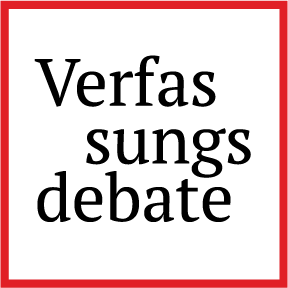Attacks on Reproductive Control
Echoes from the U.S.
In the U.S., women’s rights are under intense siege – a development that predated Donald Trump’s reign but has been dramatically accelerated by it. This siege is best understood in global context: opposition to gender equality is a core feature of authoritarian regimes around the world. Researchers find that authoritarians weaponize gender to set back equality in two ways: first, they “mobilize misogyny to capture power;” they then control “sex, gender, sexuality, and reproduction” to maintain power.
Such efforts have been particularly successful under conditions of economic and social insecurity – more specifically, as Ruth Ben-Ghiat explains, where men “feel their status is threatened due to changes in gender roles and distributions of economic and social power.” Authoritarian populists respond to these status concerns by leveraging the apparatus of the state to reinscribe women’s traditional gender roles – chiefly, wife and mother.
Against this backdrop, the U.S. offers a critical perspective for understanding how authoritarian populism concretely instrumentalizes criminal law and state power to restrict reproductive autonomy. While legal and political contexts differ, the logics at play resonate far beyond the American case. Among the oppressive techniques available to authoritarian regimes, reproductive control is central to the success of a government sustained by regressive gender politics. Policies that limit women’s reproductive options serve many functions. For instance, in the U.S. and elsewhere in Europe, increasing birthrates may appeal to those unnerved by “demographic emergencies supposedly created by declines of White births and upticks in non-White immigration.” Policies that coerce motherhood also speak to economic fears about women’s labor market gains (gains tempered, it must be said, by a pronounced motherhood penalty). These policies simultaneously channel deep anxieties about women’s social power. By penalizing non-procreative sex, reproductive restrictions are a potent mechanism for controlling female sexuality.
Pregnancy criminalization
The criminalization of pregnancy in the U.S. presents an alarming case study in these dynamics. Three years have passed since a conservative Supreme Court majority (including three of Trump’s appointees) decided Dobbs v. Jackson Women’s Health Organization, reversing Roe v. Wade and unleashing the states to regulate abortion unfettered by constitutional constraint. In that time, many states have become “laboratories of authoritarianism” (as, in other settings, commentatorshave characterized extremely conservative states), passing abortion restrictions and related measures designed to prevent women from accessing reproductive care. What has emerged is a legislative patchwork: in a dozen states, abortion is now banned completely; twenty-eight states enforce some gestational limits, with seven states prohibiting abortion at or before eighteen weeks, and several as early as six weeks.
Pregnant women have felt immediate and draconian consequences. A 2024 report by Pregnancy Justice identified at least 210 cases – in just the first year after Dobbs – involving criminal charges for “conduct associated with pregnancy, pregnancy loss, or birth.” (This number likely represents an undercount of actual cases.) In keeping with past practice, low-income individuals were disproportionately represented among the defendants. And although Pregnancy Justice has not yet published an updated study, media reports suggest that prosecutions and threatened prosecutions of pregnant women, as well as their providers, are becoming increasingly aggressive. As Jessica Valenti wrote in her crucial newsletter, Abortion Every Day, “[t]hey’re arresting us for miscarriages now.”
Beyond individual prosecutions, pregnancy criminalization has grave repercussions that include chilling the provision of reproductive care, shutting down clinics, and expanding the surveillance of women.
Reproductive control under Trump
Attacks on reproductive control are hardly confined to the states (although most criminal prosecutions are generally left to state and local authorities). Months into Trump’s second term, his administration has already signaled a profound hostility to abortion. While it remains to be seen how extensively the executive branch will curtail access, or whether it will eliminate access altogether, early signs are distressing.
In January, Trump issued an executive order that referred to life beginning at conception; this seeds the ground for nationwide recognition of “fetal personhood” that would equate abortion with murder. That same month, Trump’s Justice Department directed prosecutors to limit enforcement of the federal Freedom of Access to Clinic Entrances (FACE) Act, which protects clinics that offer reproductive health services, as well as the individuals providing and obtaining these services. The Trump administration also promptly removed the Department of Health and Human Services website offering basic reproductive health-related information (reproductiverights.gov), including information on abortion.
In February, newly confirmed Attorney General Pam Bondi said she would “love to work” with state Attorneys General seeking to prosecute out-of-state abortion providers. This assistance would presumably entail efforts to challenge state shield laws preventing the extradition of providers to face charges.
In March, the Trump administration dismissed a challenge to Idaho’s abortion ban that lacks a health exception, indicating a sharp reversal on federal guidance which required hospitals to provide stabilizing medical care to pregnant women, including when such care entails pregnancy termination. In June, the administration formally rescinded this guidance.
Most recently in early July, but throughout the first six months of his presidency, Trump deployed various tactics to defund Planned Parenthood, the nation’s largest provider of reproductive health care, and to otherwise chip away at abortion access in the U.S. and worldwide.
Perhaps needless to say, these changes are enormously consequential – yet Project 2025 calls for even greater federal involvement in undermining reproductive health care. The ultimate aim is a de facto nationwide abortion ban, to be achieved through enforcement of a long-dormant 1873 obscenity law known as the Comstock Act.
From abortion to contraception
Assaults on abortion are part of a larger, more ambitious agenda to limit women’s reproductive options. This plan is already underway: to little notice, access to contraception is itself becoming imperiled.
Post-Dobbs, the closure of many family-planning clinics, which offer a range of reproductive health services, has resulted in the decreased availability of birth control. A recent study to examine prescriptions filed at U.S. pharmacies in states with the most restrictive abortion policies found a marked decline in contraceptive pills (the most preferred hormonal contraception). Other research has likewise shown a recent reduction in access to a range of effective methods of non-permanent contraception.
This reduction is bound to worsen: In March, the Trump administration froze a significant portion of funding under the Title X Family Planning Program (Title X), the federal statute providing low-income patients with reproductive health care—including contraception. On top of federal funding restrictions, clinic operators must now contend with states placing new limits on reimbursement rates and removing Medicaid funding completely. These developments barely scratch the surface of current incursions on birth control. (In forthcoming work, I catalogue a dizzying array of dangers to contraceptive access.)
Resistance
None of this bodes well for women’s reproductive agency, at least for the foreseeable future. Under Trump, and in states situated on the leading edge of rollbacks to gender equality, we should expect to see continued moves to ramp up reproductive control. What is equally certain, however, is fierce resistance. As Erica Chenowith and Zoe Marks observe, “[f]eminists have always found ways to demand and expand women’s rights and freedoms, powering democratic advancement in the progress.” Because “fully free, politically active women are a threat to authoritarian and authoritarian-leaning leaders,” as Chenowith and Marks further note, feminist movements are a powerful counterweight to Trump and the forces that empowered him. In the battle for reproductive control, the stakes could not be higher.



